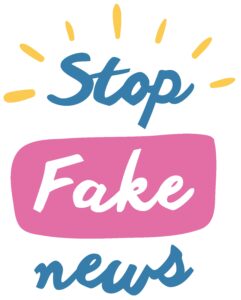
In today’s digital age, fostering digital literacy from an early age is crucial. As young students increasingly interact with digital media, it is vital to equip them with the skills to navigate and evaluate information effectively.
Understanding Digital Literacy
Digital literacy encompasses the ability to find, evaluate, and use information effectively. Even at a young age, students can begin to develop these skills. According to the American Library Association’s Framework for Information Literacy for Higher Education, digital literacy includes critical thinking and ethical participation in the digital world. These skills are essential for young learners who will grow up in an information-rich, digital environment.
The Importance of Digital Literacy for Young Learners
Young children are particularly susceptible to misinformation due to their developing cognitive and analytical skills. Resources like “Media Manipulation and Disinformation Online” highlight the ease with which information can be distorted, making it imperative to teach children how to discern credible sources. The Stanford study further emphasizes the challenges students face in distinguishing reliable information from falsehoods, underscoring the need to start digital literacy education early.
Strategies for Teaching Digital Literacy in Early Elementary
Incorporating digital literacy into the early elementary curriculum involves age-appropriate activities that foster critical thinking and evaluative skills. Here are some practical strategies:
- During storytime, include books and digital stories that address themes of truth and fiction. Discuss with students how to tell the difference between real and imaginary stories. Use resources like “How Do We Teach Students to Identify Fake News?” to guide these discussions, helping students understand that not everything they see or hear is true.
- Use interactive games and quizzes to teach students about credible sources and misinformation. Tools like “Can You Spot the Fake News Headline?” and “Spot the Troll” provide engaging ways for young learners to practice identifying false information in a safe and controlled environment.
- Incorporate simple lessons on evaluating digital content. Use visuals and videos, such as “How to Choose Your News”, to teach students about trusted sources and the importance of verifying information. This can be tied to reading comprehension skills, where students learn to ask questions about the text and seek evidence for their answers.
- Engage students in role-playing activities where they practice being news reporters or fact-checkers. This hands-on approach makes learning about digital literacy fun and memorable. It also helps students understand the importance of gathering information from reliable sources.
- Introduce basic critical thinking exercises that encourage students to question what they see and hear. Simple activities like comparing two different versions of the same story can help students understand bias and perspective. The “Evaluating Sources in a ‘Post-Truth’ World” resource from the NY Times offers ideas for such activities.
Aligning with NCTE Framework Goals
The NCTE framework emphasizes preparing students for literacy in a digital age. By integrating digital literacy into early elementary education:
- Reading: Students will read a variety of texts, learning to navigate and critically evaluate both print and digital formats.
- Writing: Students will engage in writing activities that involve using digital tools, and understanding the importance of citing reliable sources.
- Speaking and Listening: Classroom discussions and presentations on digital literacy topics will develop students’ oral communication skills and their ability to engage in thoughtful, informed dialogue.
- Language: Students will learn about the power of language in shaping thought and public opinion, which is critical when analyzing media and online content.
Conclusion
Teaching digital literacy in early elementary education is about more than just imparting skills; it’s about shaping how young students interact with and understand the world around them. By incorporating activities that promote critical thinking, evaluating sources, and ethical use of information, educators can lay a strong foundation for digital literacy. This not only aligns with educational standards but also prepares students to become informed and responsible digital citizens in an increasingly digital world.